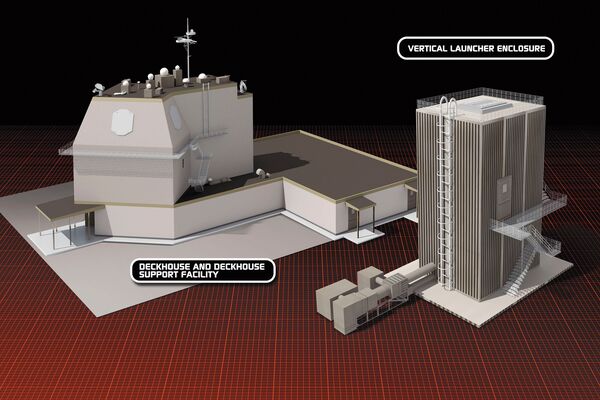
Aegis Ashore's four-storey deckhouse and launch tower provide a static home in Romania and Poland for the SPY-1D(V) radar, SM-3 missiles, and other systems derived from the US Navy's Aegis BMD ships. (MDA)
The US Missile Defense Agency (MDA) is planning for a 5 June ‘light-off' to turn on and test its long-delayed Aegis Ashore missile interceptor system in Poland, according to MDA Director Vice Admiral Jon Hill.
US Navy sailors are ‘aboard' the system in Poland and the radar arrays are up, and “full functional checks all through the system” will begin after 5 June, Vice Adm Hill said on 23 May at the Center for Strategic and International Studies.
Those checks and a series of certifications are to ultimately lead to official acceptance via the US chief of naval operations, US European Command, and NATO, so the timeline for the Aegis Ashore's actual operation is unclear, he said.
Problems with the Polish site's auxiliary controls for power, heating, and cooling have caused significant construction delays. In December 2019 MDA sent a team to assess the project's progress to see if it could be phased in sooner, but concluded that it would require some contract modifications to get it completed by 2022. The system in Poland was planned to go online by December 2018.
An Aegis Ashore facility recreates the ship-based Aegis combat system and vertical launching system (VLS) in a land-based structure, built first by Lockheed Martin at its Moorestown, New Jersey, facility, then disassembled, shipped overseas, and reassembled on site.
The first Aegis Ashore site in Romania was certified operational in May 2016.
Looking to read the full article?
Gain unlimited access to Janes news and more...
